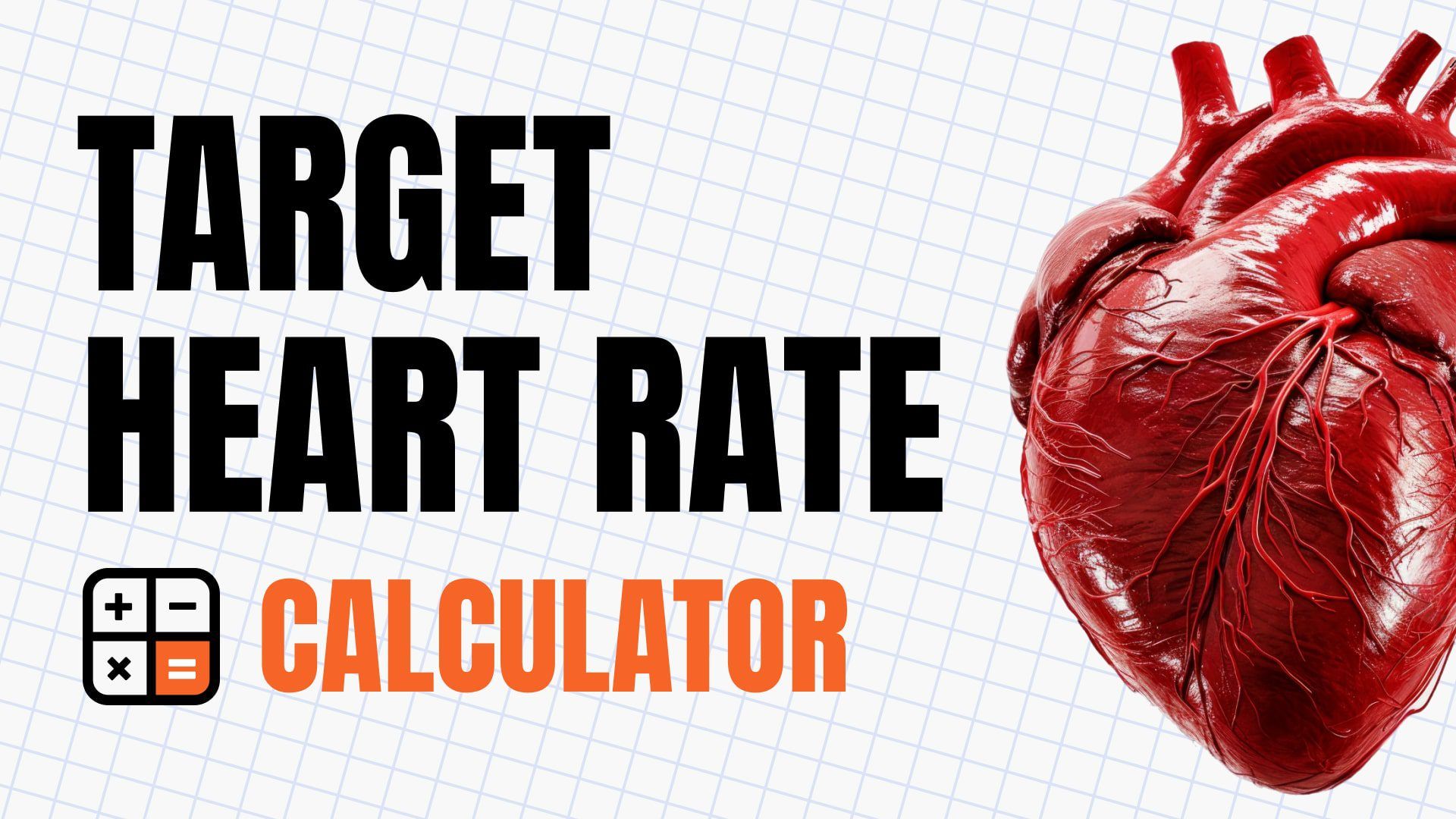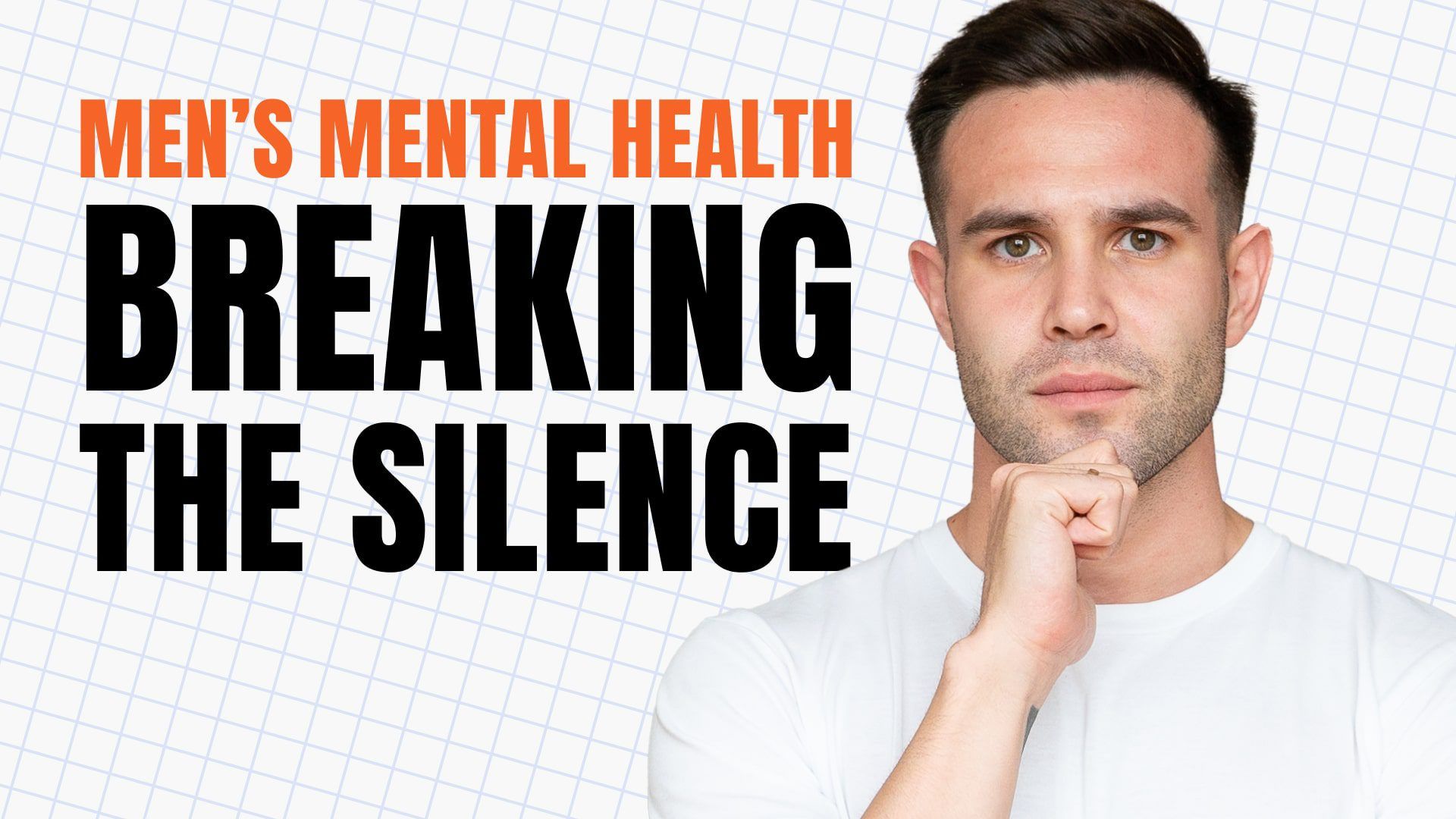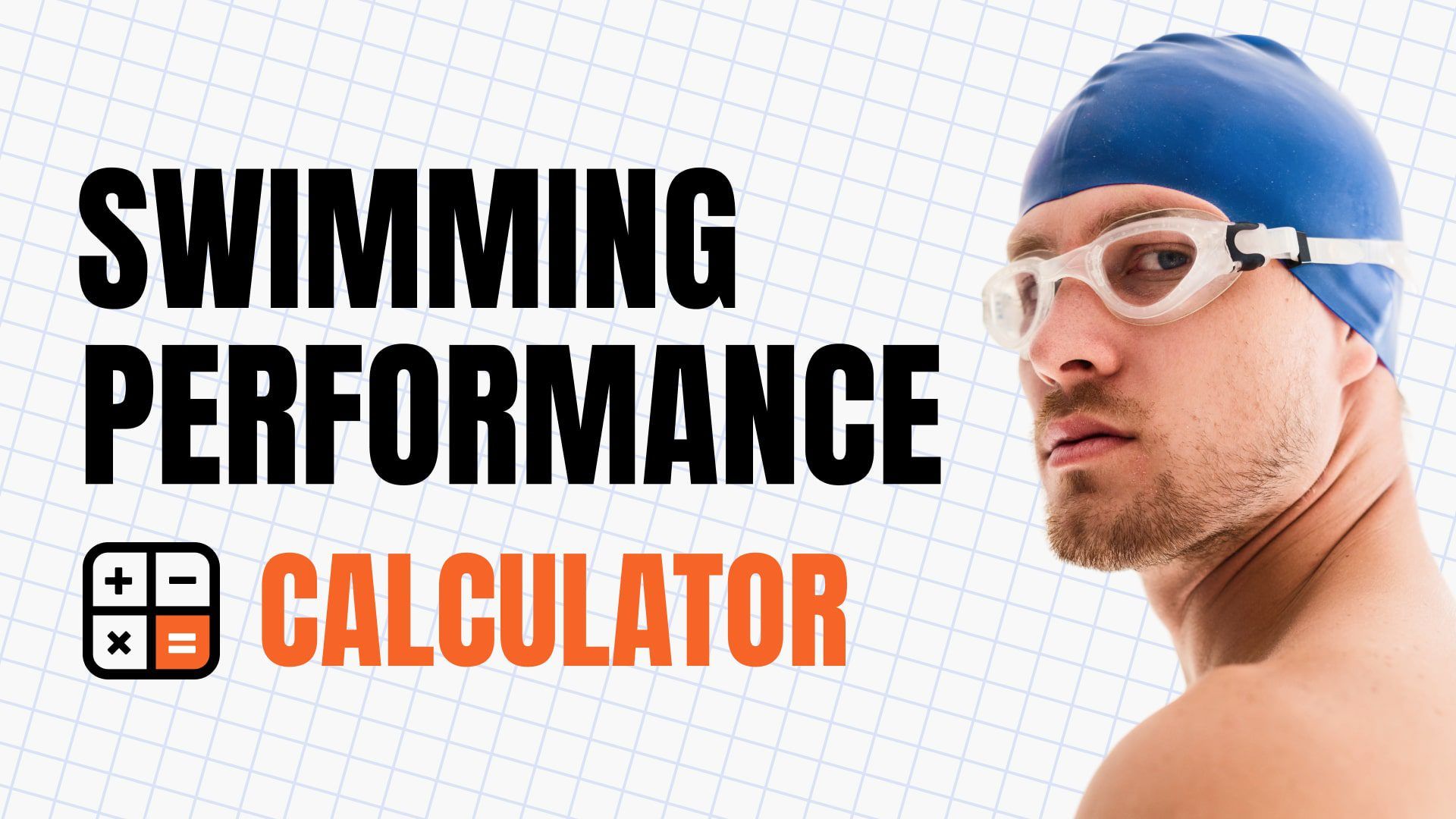
Calculate Your Target Heart Rate: Heart Rate Calculator + Guide
Table of contents
In this article, you will learn…
In this article, you’ll discover how to calculate your target heart rate (THR) using different methods, such as the basic age-based formula and the more personalized Karvonen formula. Understanding your target heart rate is crucial for optimizing your workout intensity, whether you’re aiming for fat loss, improved cardiovascular health, or athletic performance. This guide will walk you through the process of calculating your THR, interpreting the results, and applying this knowledge to achieve your fitness goals.
Key Takeaways
- The target heart rate calculator helps you determine the optimal heart rate zones for different levels of exercise intensity.
- Understanding your target heart rate can help you maximize fat burning, enhance cardiovascular health, and improve endurance.
- The calculator uses both basic and advanced methods, including age-based and Karvonen formulas, to provide personalized heart rate zones.
- By training within your target heart rate zones, you can ensure your workouts are safe, effective, and aligned with your fitness objectives.
How the Target Heart Rate Calculator Works
Key Metrics Used in the Calculator
The target heart rate calculator uses several key inputs to determine your ideal heart rate zones for different exercise intensities:
- Age: Age is used in the basic method to estimate your maximum heart rate (MHR) using the formula 220 minus your age. This MHR is then used to calculate your target heart rate zones.
- Resting Heart Rate (RHR): The Karvonen method incorporates your resting heart rate, providing a more individualized estimate of your heart rate zones. A lower RHR typically indicates better cardiovascular fitness.
- Maximum Heart Rate (MHR): The Karvonen method allows for direct input of your MHR, which can be determined through testing or using the age-based formula. This method gives a more tailored approach to calculating your target heart rate.
These metrics are combined in various formulas to provide your target heart rate zones, helping you train at the right intensity for your fitness goals.
Step-by-Step Calculation
Example Calculation Using the Basic Age-Based Method: Let’s say you’re 30 years old and want to determine your target heart rate for different workout intensities:
Calculate Maximum Heart Rate (MHR): Use the formula 220 minus your age:
Your maximum heart rate is 190 beats per minute (bpm).
Calculate Target Heart Rate Zones: Using the MHR, calculate your target heart rate for various intensity zones:
Your target heart rate for a warm-up is 95-114 bpm.
Fat Burn Zone (60-70% MHR):
Your target heart rate for fat burning is 114-133 bpm.
Aerobic Zone (70-80% MHR):
Your target heart rate for aerobic exercise is 133-152 bpm.
Anaerobic Zone (80-90% MHR):
Your target heart rate for anaerobic exercise is 152-171 bpm.
VO2 Max Zone (90-100% MHR):
Your target heart rate for maximum effort is 171-190 bpm.
This calculation helps you identify the heart rate ranges that align with different exercise goals, allowing you to optimize your workouts for the best results.
Interpreting Your Target Heart Rate Results
Understanding Different Heart Rate Zones
Your target heart rate (THR) results are divided into different zones, each corresponding to a specific exercise intensity and fitness goal. Understanding these zones helps you tailor your workouts to achieve the desired outcome, whether it’s improving endurance, burning fat, or enhancing cardiovascular fitness.
- Warm-Up Zone (50-60% MHR):
This zone is ideal for warming up before a workout or cooling down afterward. Exercising in this zone prepares your body for more intense activity by gradually increasing your heart rate and circulation. - Fat Burn Zone (60-70% MHR):
In this zone, your body primarily uses fat as a fuel source. It’s an effective intensity for weight loss and improving basic aerobic fitness. Workouts in this zone should feel comfortable and sustainable for longer durations. - Aerobic Zone (70-80% MHR):
Also known as the endurance zone, exercising here strengthens your heart and lungs while increasing your aerobic capacity. This zone is suitable for activities like jogging, cycling, and swimming, where you can maintain a steady pace. - Anaerobic Zone (80-90% MHR):
This higher-intensity zone improves your cardiovascular fitness and muscle strength. It’s often used for interval training, where you push your limits for short bursts, followed by recovery periods. - VO2 Max Zone (90-100% MHR):
The highest intensity zone, VO2 Max training is used by athletes to improve maximum performance. Workouts in this zone are short and extremely challenging, as your body is working at its full capacity.
Each zone serves a different purpose in your training regimen. By understanding and targeting these zones, you can ensure that your workouts are aligned with your specific fitness goals.
Applying the Karvonen Method for More Personalized Results
The Karvonen method offers a more personalized approach to calculating your target heart rate, as it considers both your resting heart rate (RHR) and maximum heart rate (MHR). This method is particularly beneficial for those who are already moderately to highly fit, as it adjusts the intensity zones based on your cardiovascular health.
Example Calculation Using the Karvonen Method:
Let’s assume you’re 30 years old with a resting heart rate of 60 bpm and you want to find your target heart rate for the aerobic zone (70-80% MHR):
Calculate Maximum Heart Rate (MHR): Use the basic formula:
Calculate Heart Rate Reserve (HRR): Subtract your resting heart rate from your maximum heart rate:
Calculate Target Heart Rate (THR): Apply the desired intensity percentage to the HRR, then add your resting heart rate:
1. Lower Bound (70% Intensity):
2. Upper Bound (80% Intensity):
In this case, your target heart rate for the aerobic zone would be 151-164 bpm. The Karvonen method provides a more accurate reflection of your cardiovascular effort, making it a valuable tool for tailoring workouts to your fitness level.
The Benefits of Training Within Your Target Heart Rate Zones
Optimizing Workout Efficiency
Training within your target heart rate zones allows you to maximize the effectiveness of your workouts. By exercising at the right intensity, you ensure that you’re working towards your specific fitness goals, whether it’s burning fat, building endurance, or increasing speed and power.
- Preventing Overtraining:
By staying within the appropriate heart rate zones, you reduce the risk of overtraining and injury. It helps you avoid pushing your body too hard too often, allowing for adequate recovery. - Monitoring Progress:
Regularly tracking your heart rate during workouts can help you monitor your fitness progress. As you become fitter, your resting heart rate may decrease, and you may notice that you can sustain higher intensities for longer periods. - Personalized Training:
Using methods like the Karvonen formula, you can tailor your training to your individual fitness level, ensuring that your workouts are neither too easy nor too challenging. This personalized approach helps you achieve steady, sustainable improvements in your fitness.
Enhancing Fat Loss and Cardiovascular Health
Working out in the correct heart rate zones is particularly effective for fat loss and improving cardiovascular health. The fat burn zone (60-70% MHR) is ideal for long, steady-state cardio sessions that primarily use fat as an energy source. Meanwhile, the aerobic and anaerobic zones (70-90% MHR) strengthen your heart and lungs, improving your body’s efficiency at higher intensities.
- Sustainable Fat Loss:
Exercising in the fat burn zone allows for prolonged activity, which can contribute to steady fat loss over time. This zone is also less taxing on the body, making it easier to maintain regular exercise habits. - Cardiovascular Benefits:
Training in the aerobic and anaerobic zones improves your heart’s ability to pump blood and deliver oxygen to your muscles. This enhances your overall cardiovascular health, reduces the risk of heart disease, and increases your endurance for longer and more intense workouts.
By understanding and applying your target heart rate zones, you can make your workouts more efficient, targeted, and aligned with your fitness goals, leading to better results and overall health improvements.
The Limitations of the Target Heart Rate Calculator
Generalized Formulas vs. Individual Variability
While the target heart rate calculator is a helpful tool, it relies on generalized formulas, such as the basic age-based method and the Karvonen formula, which may not perfectly reflect individual differences. Here are some of the limitations to consider:
- Age-Based Estimates: The basic formula (220 minus age) provides a rough estimate of your maximum heart rate, but it doesn’t account for individual factors like genetics, fitness level, or specific health conditions. Some people may have a naturally higher or lower maximum heart rate than the formula predicts.
- Resting Heart Rate (RHR) Variability: The Karvonen method offers a more personalized approach by incorporating your resting heart rate. However, your RHR can vary depending on factors such as stress, sleep quality, and hydration levels, which may affect the accuracy of the calculation on any given day.
- Fitness Level: Athletes or highly trained individuals often have a higher tolerance for intense exercise, meaning they can sustain higher heart rates without reaching their maximum capacity. Conversely, beginners might reach their target zones at lower intensities than calculated.
Because of these limitations, it’s essential to use the calculator as a guideline rather than a definitive measure. For more accurate training, consider regular heart rate monitoring during workouts and adjust your effort based on how your body feels rather than strictly adhering to calculated zones.
The Impact of External Factors
Several external factors can influence your heart rate and, consequently, the accuracy of the target heart rate zones calculated:
- Environmental Conditions: Heat, humidity, and altitude can all elevate your heart rate, making it difficult to stay within your calculated target zones. For example, running on a hot day may cause your heart rate to spike, even if you’re not exerting yourself more than usual.
- Hydration and Nutrition: Dehydration or lack of proper nutrition can also lead to higher heart rates, especially during prolonged exercise. Ensuring you’re well-hydrated and adequately fueled can help you maintain the appropriate intensity levels.
- Medications: Certain medications, particularly those affecting heart rate or blood pressure, can alter your heart rate response during exercise. If you’re on medication, it’s crucial to consult with a healthcare provider to understand how it might impact your training zones.
Given these factors, it’s important to consider the context in which you’re exercising and to use the calculator’s results as part of a broader strategy that includes listening to your body and adjusting based on real-time feedback.
FAQ
How accurate is the target heart rate calculator?
The target heart rate calculator provides a good estimate based on widely accepted formulas, but its accuracy can vary depending on individual factors like fitness level, genetics, and specific health conditions. While it’s a useful tool for general guidance, the results should be considered as approximate rather than precise.
Can I use the calculator if I’m on medication that affects my heart rate?
If you’re taking medication that influences your heart rate, such as beta-blockers or blood pressure medications, the calculator’s results might not be accurate. It’s advisable to consult with your healthcare provider to determine appropriate heart rate zones based on your medication and overall health.
How should I adjust my target heart rate zones based on my fitness level?
As your fitness level improves, your heart may become more efficient, and you might find that you need to work harder to reach the same heart rate zones. Regularly monitor your heart rate during workouts and adjust your target zones as needed to ensure you’re challenging yourself appropriately while avoiding overtraining.
How does age affect my target heart rate?
As you age, your maximum heart rate typically decreases, which means your target heart rate zones will also shift lower. The basic formula (220 minus age) reflects this, but keep in mind that individual variations can occur, and some people may maintain a higher or lower heart rate than the formula predicts.
What’s the difference between the basic method and the Karvonen method?
The basic method calculates target heart rate zones based solely on your age, providing a general estimate of your maximum heart rate. The Karvonen method, however, includes your resting heart rate in the calculation, offering a more personalized estimate that can be more accurate for individuals with different fitness levels or cardiovascular health.
How can I measure my resting heart rate (RHR) accurately?
To measure your resting heart rate accurately, take your pulse first thing in the morning before getting out of bed. Count the number of beats for 60 seconds. Repeat this for a few days and take the average to get a more accurate RHR, which you can use in the Karvonen formula.
Should I always stay within my target heart rate zones during workouts?
While staying within your target heart rate zones is beneficial for specific goals, it’s not always necessary. For example, low-intensity recovery workouts might be below your usual target zone, while high-intensity intervals may push you above it. Use your target zones as a guide but listen to your body and adjust as needed based on the workout’s purpose.
How often should I recalculate my target heart rate zones?
You should recalculate your target heart rate zones periodically, especially if you notice changes in your fitness level, resting heart rate, or workout intensity. Significant weight loss, changes in medication, or improvements in cardiovascular fitness are also good reasons to update your calculations.
How can I use my target heart rate zones to improve endurance?
To improve endurance, focus on training in the aerobic zone (70-80% MHR). This zone enhances your body’s ability to deliver oxygen to your muscles, allowing you to sustain exercise for longer periods. Incorporating long, steady-state cardio sessions within this zone is key to building endurance.
What if I can’t reach my target heart rate zones during exercise?
If you’re unable to reach your target heart rate zones, it might indicate that you’re not exerting yourself enough, or it could be due to factors like medication or fatigue. Consider increasing the intensity of your workout or adjusting your goals. If you consistently struggle to reach your target zones, consult with a fitness professional or healthcare provider to assess your approach.
Can I use the target heart rate calculator for different types of exercise?
Yes, the target heart rate calculator can be used for various types of exercise, including running, cycling, swimming, and even resistance training. The key is to monitor your heart rate during the activity to ensure you’re within the appropriate zone for your fitness goals.
How does my heart rate variability (HRV) relate to my target heart rate zones?
Heart rate variability (HRV) measures the variation in time between each heartbeat and is an indicator of your autonomic nervous system’s activity. Higher HRV generally indicates better cardiovascular health and recovery, while lower HRV can signal stress or fatigue. Although HRV is not directly used in calculating target heart rate zones, it’s a valuable metric to monitor alongside heart rate to optimize your training and recovery.
What’s the best way to monitor my heart rate during exercise?
The most accurate way to monitor your heart rate during exercise is by using a chest strap heart rate monitor, which provides real-time data. Alternatively, wrist-based fitness trackers and smartwatches can offer convenience, though they may be slightly less accurate during high-intensity activities.
How can I avoid overtraining by using my target heart rate zones?
To avoid overtraining, ensure that your workout plan includes a mix of intensities, with adequate time spent in lower zones (like the warm-up and aerobic zones) to allow for recovery. Monitor your heart rate and watch for signs of fatigue or elevated resting heart rate, which could indicate the need for more rest or lighter activity.
How should I interpret my target heart rate zones in the context of overall health?
Your target heart rate zones are a tool to guide your exercise intensity and ensure you’re working out effectively. However, they should be considered alongside other health indicators like blood pressure, cholesterol levels, and overall physical fitness. Regular check-ups and consultations with healthcare professionals can help you maintain a balanced approach to health and fitness.
Conclusion
This article provided a comprehensive guide on how to calculate and interpret your target heart rate (THR) zones. We covered the basic age-based method and the more personalized Karvonen method, helping you understand how to determine the optimal heart rate for different exercise intensities. We also discussed the importance of training within your target heart rate zones to achieve specific fitness goals, such as fat loss, cardiovascular improvement, and endurance building. Additionally, we highlighted the limitations of the calculator, the impact of external factors, and the benefits of using a heart rate monitor to track your progress accurately.
Final Thoughts
Understanding and applying your target heart rate zones can significantly enhance the effectiveness of your workouts. By using these zones as a guide, you can tailor your training to match your fitness goals, whether you’re aiming to lose weight, improve endurance, or boost overall health. Remember to listen to your body, consider the broader context of your health, and adjust your training as needed. For more tools, tips, and resources, explore my blog and connect with me on social media, where I share insights to help you achieve your fitness and wellness goals.
Works Cited and Relevant Links
- American Heart Association. (2020). Target Heart Rates.
- Karvonen, M. J., Kentala, E., & Mustala, O. (1957). The effects of training on heart rate; a longitudinal study. Annales Medicinae Experimentalis et Biologiae Fenniae, 35, 307-315.
- Tanaka, H., Monahan, K. D., & Seals, D. R. (2001). Age-predicted maximal heart rate revisited. Journal of the American College of Cardiology, 37(1), 153-156.
- World Health Organization. (2021). Physical activity guidelines for adults.
- Gellish, R. L., Goslin, B. R., Olson, R. E., McDonald, A., Russi, G. D., & Moudgil, V. K. (2007). Longitudinal modeling of the relationship between age and maximal heart rate. Medicine & Science in Sports & Exercise, 39(5), 822-829.
I am not a doctor, fitness coach, nutritionist, or trained health professional. The information I share is based on my personal experience, self-research, and insights from working with health and wellness professionals. My content is for informational and entertainment purposes only and is not intended as health advice.
Always consult with your healthcare provider before making any significant changes to your health routines or treatments. I am not liable for any actions taken based on this information.
Your well-being is my top priority. Stay healthy and take care!










Leave a Reply